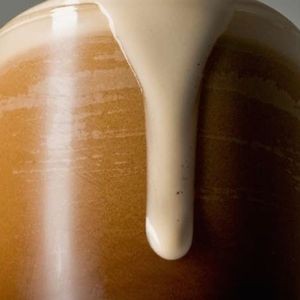
Stout – the world’s most popular dark beer
Don’t be afraid of the dark. We all remember this childhood pacifier delivered at bedtime once the closets had been checked thrice and the spooky-shaped dust bunnies under the bed had been scrutinized for the last time.
Now that we have grown and we are fairly confident that there are no monsters in the dresser; we have managed our fear of the dark. Or have we? Time spent recently with consumers discussing beers styles and trends revealed a lot of and more than a little trepidation regarding one of my favorite styles, Stout.
Stouts come in many different varieties but they are all dark and nearly opaque with a substantial, thick head. Watching the tiny bubbles slowly and methodically climbing to the top of the pint glass is a thirst quenching – if not semi-religious – experience for many but there are just as many who still fear the dark.
Much of the fear is that Stout is too heavy and filling or that it is too strong. First, allow me to address the concern of strength. Did you know that the typical Dry Stout (such as Guinness, Murphy’s, and Beamish) is lower in alcohol strength than any import Pilsner, IPA, or Weizen Bier to name just a few? Regarding the filling nature of the Stout, many of us Stout lovers who covet it as a session Beer don’t find it to be any more filling than any other non-light Beer. Perhaps it is the creamy texture created by the nitrogen assisted pour that tricks the brain into thinking it has just consumed something creamy? In Stout’s defense I can state with certainty that this country’s most popular Irish Stout has roughly the same calorie count as the most popular Mexican import, Corona.
While there is no bad time to enjoy a Stout, some may find it an odd recommendation for breakfast, or perhaps brunch for the timid. Stouts, especially Dry Stouts, are made with a healthy portion of dark roasted malts. (Learn about malt here.) These dark roasted malts offer aromas and flavors that run from roasted cocoa beans to espresso. While you may order coffee with your eggs, I prefer a pint of Dry Stout.
The many faces of Stout
Dry Stout is characterized by its moderate alcohol, restrained hop impression, dark roasted coffee-like flavors and aromas, as well as a thick, creamy head. This is often referred to as the Irish Style. These are ideal session Ales pairing well with pub fare or needing nothing but a glass. There are some modern, New World, Beer aficionados who deride the Dry Stout as being too light, too restrained and muted. All I can say is, hogwash. I often part ways philosophically with the “bigger is better” crowd that seek the extremes and miss the joys of life’s subtle pleasures. Examples include: Guinness, Murphy’s, and Beamish.
Sweet Stouts are, as one would imagine, quite different than Dry Stout and charming in their own right. Sweet stout usually contains milk sugars (lactose) that create a rich, creamy texture and slight sweetness on the palate. Oatmeal Stouts slot into this sub-category as well, as the oats too deliver a discernable sweetness and rich, protein driven texture. Oatmeal Stouts tend to be stronger than Milk Stouts. Sweet Stouts offer a milder roasted malt and barley character than do their cousin the Dry Stout cousin. Examples include: Mackeson XXX, Bell’s Oatmeal, and Left Hand Milk Stout.
Imperial Stouts are the biggest and boldest of the bunch being both high in alcohol and weighty on the palate with intense malt flavors that lean toward fruity. They can also deliver a generous roasted malt character as well. Originally brewed as a winter warmer, in the Tsarist Russian Empire, the Imperial Stout has become a bit of a catchall category for all extreme Stouts. These Ales typically exceed 8% alcohol by volume and frequently top 10%. Examples include: North Coast Old Rasputin, Samuel Smith’s Imperial, and Sam Adams Imperial.
